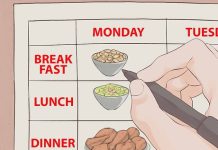How do you prioritize which items to keep, donate or throw away during the organization process.
Organizing and decluttering your space can be a daunting task, but it is also an incredibly rewarding one. Whether you are downsizing, spring cleaning, or just trying to create a more functional living environment, deciding what to keep, donate, or throw away is crucial. This article will guide you through an effective process for prioritizing your items, helping you make informed decisions and ultimately achieve a clutter-free space.
Table of Contents
TogglePreparing for the Organization Process
Set Clear Goals
Before diving into the decluttering process, it’s important to establish clear goals. Determine what you want to achieve with your organization project. Are you looking to create more space, reduce stress, or simplify your life? Having specific goals will keep you motivated and focused.
Gather Supplies
Ensure you have the necessary supplies to make the process smoother. Common supplies include:
- Storage bins or boxes
- Trash bags
- Labels and markers
- Cleaning supplies
- A notebook or digital device for inventory
Step-by-Step Guide to Decluttering
Step 1: Categorize Your Items
Begin by categorizing your items into broad groups. Typical categories might include clothing, books, kitchenware, electronics, and sentimental items. This approach helps to break down the overwhelming task into manageable segments.
Step 2: The Four-Box Method
The Four-Box Method is a popular and effective technique for decluttering. Label four boxes or areas as follows:
- Keep: Items you use regularly and hold significant value.
- Donate: Items in good condition that you no longer need or use.
- Sell: Valuable items that you no longer want but could fetch a good price.
- Throw Away: Items that are broken, expired, or in poor condition.
Criteria for Decision-Making
Keep
- Frequency of Use: How often do you use the item? If it’s something you use daily or weekly, it’s likely worth keeping.
- Practicality: Does the item serve a practical purpose in your current lifestyle? Items that make your life easier or more efficient should be prioritized.
- Sentimental Value: While it’s important to limit sentimental items, those with deep personal significance or irreplaceable memories should be considered for keeping.
Donate
- Condition: Items that are in good condition but no longer serve you can often benefit someone else. This includes clothing, books, kitchenware, and toys.
- Duplicates: If you have multiple items serving the same purpose, consider donating the extras.
- Changing Needs: If your needs or interests have changed, donate items related to past hobbies or activities you no longer pursue.
Sell
- Value: Items that are in good condition and have significant monetary value can be sold. This includes electronics, designer clothing, and collectibles.
- Demand: Consider the demand for the item. Research online to see if similar items are selling well.
- Effort vs. Reward: Assess whether the effort to sell the item is worth the potential reward. If it requires a lot of time and effort for a small return, it might be better to donate.
Throw Away
- Broken or Damaged: Items that are broken, damaged beyond repair, or missing essential parts should be discarded.
- Expired: Perishable goods, expired medications, and outdated beauty products should be thrown away.
- Irreparable: Items that cannot be fixed or repurposed should be disposed of.
Tips for Staying Organized
Regular Maintenance
Organization is an ongoing process. Schedule regular decluttering sessions to prevent accumulation and maintain a tidy space. A monthly or quarterly review can keep your belongings in check.
One-In, One-Out Rule
Adopt the one-in, one-out rule to prevent clutter from building up again. For every new item you bring into your home, remove one existing item. This practice encourages mindful consumption and helps maintain balance.
Use Storage Solutions
Invest in storage solutions that suit your space and needs. Utilize shelves, bins, and organizers to keep your belongings neatly arranged and easily accessible.
Emotional Considerations
Decluttering can be an emotional process, especially when dealing with sentimental items. Here are a few tips to manage emotional attachment:
- Take Breaks: If you find yourself overwhelmed, take breaks and return to the task when you feel ready.
- Keep the Essentials: Focus on keeping only the most meaningful sentimental items. Photograph or document items you choose to part with to preserve the memory without the physical clutter.
- Seek Support: Enlist the help of friends or family for emotional support and practical assistance.
Decluttering and organizing your space requires thoughtful decision-making and a structured approach. By setting clear goals, using effective techniques like the Four-Box Method, and considering practical and emotional criteria, you can prioritize what to keep, donate, or throw away. Regular maintenance and mindful consumption will help you maintain a clutter-free and harmonious living environment. Embrace the process and enjoy the benefits of a more organized and peaceful space.








